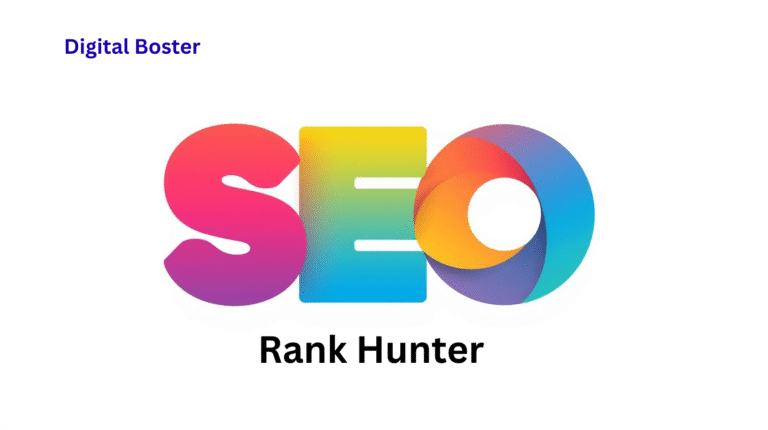Introduction
If you run an online store, you already know that ranking high on Google is the difference between obscurity and explosive sales. But with millions of ecommerce websites competing for attention, how do you stand out? That’s where Ecommerce SEO Rankstar strategies come in.
This guide isn’t just another surface-level SEO tutorial—it’s a deep dive into the exact techniques that help online stores dominate search rankings. Whether you’re on Shopify, WooCommerce, or Magento, these ecommerce SEO best practices will help you attract more organic traffic, improve conversions, and leave competitors in the dust.

What Is Ecommerce SEO Rankstar?
Ecommerce SEO Rankstar refers to the process of optimizing every aspect of an online store—product pages, category structures, technical performance, and content—to rank higher on search engines like Google. Unlike traditional SEO, ecommerce search engine optimization requires specialized tactics because:
- Product pages compete against thousands of similar listings.
- Duplicate content (like manufacturer descriptions) can hurt rankings.
- Technical SEO issues (slow loading, poor mobile experience) are more common in ecommerce.
By mastering ecommerce ranking strategies, you can turn your store into a Google favorite, driving consistent, high-intent traffic without relying solely on paid ads.
Why Is SEO Critical for Ecommerce Websites?
SEO isn’t just a “nice-to-have” for online stores—it’s a must. Here’s why:
Higher Rankings = More Trust
- 75% of users never scroll past the first page of Google. If you’re not ranking in the top 3, you’re missing out on massive traffic.
Long-Term Traffic Growth
- Paid ads stop working the moment you turn them off. SEO keeps bringing in free, targeted visitors for months (or even years).
Better ROI Than Paid Ads
- Organic traffic converts 1.5x better than paid traffic because users actively search for what you sell.
Competitive Advantage
- Big brands dominate with budgets, but smart SEO for online businesses lets smaller stores outrank them with better optimization.
Key Elements of Ecommerce SEO Rankstar
1. Keyword Research for Ecommerce
Finding the right keywords is the foundation of ecommerce SEO. You need terms that shoppers actually use—not just generic, high-competition words.
Best Practices for Ecommerce Keyword Research:
- Use Buyer-Intent Keywords
- “Buy wireless headphones” (transactional) > “Best headphones 2024” (informational).
- Target Long-Tail Keywords
- “Affordable noise-canceling headphones for travel” converts better than “headphones.”
- Analyze Competitor Keywords
- Tools like Ahrefs & SEMrush show what’s working for rivals.
Top Ecommerce SEO Tools for Keyword Research
| Tool | Best For |
|---|---|
| Ahrefs | Competitor keyword gaps |
| SEMrush | Product ranking opportunities |
| Google Keyword Planner | Free search volume data |
| AnswerThePublic | Long-tail & question-based queries |
2. Optimizing Product Pages for Maximum SEO Impact
Product pages are the money-makers of ecommerce SEO. If they’re not optimized, you’re leaving sales on the table.
How to Optimize Product Pages:
✔ Unique, Detailed Descriptions
- Avoid duplicate manufacturer text—Google penalizes it.
- Include keywords naturally (e.g., “best running shoes for flat feet”).
✔ High-Quality Images & Alt Text
- Use high-res photos (1200x1200px minimum).
- Write descriptive alt text (e.g., “Nike Air Max running shoes – black & red”).
✔ Schema Markup for Rich Snippets
- Helps Google display price, reviews, and stock status directly in search results.
✔ SEO-Friendly URLs
- ❌ *yoursite.com/product123*
- ✅ yoursite.com/nike-air-max-running-shoes
3. Category Page Optimization
Category pages help users (and Google) navigate your store. Poor optimization = lost rankings.
How to Improve Category SEO:
- Keyword-Optimized Titles & Meta Descriptions
- Example: “Men’s Running Shoes – Best Brands for Comfort & Durability | [Store Name]”
- Internal Linking to Boost Authority
- Link related products (e.g., “You may also like…” sections).
- Avoid Duplicate Content from Filters
- Use canonical tags if filters create similar URLs (e.g., ?color=red vs. ?color=blue).
4. Technical SEO for Ecommerce Sites
If your site is slow or hard to crawl, no amount of content will save your rankings.
Critical Technical Fixes:
- Mobile-First Optimization (Google’s #1 ranking factor)
- Site Speed Under 3 Seconds (Use Google PageSpeed Insights)
- Fix Broken Links & 404 Errors (Hurts user experience & rankings)
- XML Sitemap Submission (Helps Google index pages faster)
5. Content Marketing for Ecommerce
Blogs & guides attract shoppers before they’re ready to buy.
Best Ecommerce Content Ideas:
- “How to Choose…” Guides (e.g., “How to Pick the Best DSLR Camera”)
- Product Comparisons (e.g., “iPhone 15 vs. Samsung Galaxy S24”)
- Video Demos & Tutorials (Rank on YouTube + Google)
6. Link Building Strategies for Ecommerce
Backlinks = Google’s vote of confidence.
Best Ecommerce Link Building Tactics:
- Guest Posts on Industry Blogs
- Influencer Collaborations (Product reviews = links + traffic)
- Broken Link Building (Find dead links & suggest your content)
7. User Experience (UX) Optimization
Google rewards sites that keep users happy.
UX Fixes That Boost SEO:
- Fast, Simple Checkout Process (Reduce cart abandonment)
- Clear Navigation & Search Bar (Helps users find products fast)
- Readable Fonts & Contrast (Better engagement = lower bounce rate)
8. Local SEO for Ecommerce Stores
Even if you sell nationally, local SEO helps.
How to Optimize for Local Search:
- Google Business Profile (If you have a physical store)
- Local Keywords (e.g., “buy yoga mats in Austin”)
- Customer Reviews (Builds trust + local rankings)
Common Ecommerce SEO Mistakes to Avoid
🚫 Duplicate Product Descriptions → Google penalties
🚫 Ignoring Mobile Optimization → Lost rankings
🚫 Poor Internal Linking → Wasted ranking power
🚫 Neglecting Image Optimization → Slow loading = higher bounce rate
Measuring Ecommerce SEO Success
Track these KPIs to see if your SEO efforts work:
📈 Organic Traffic Growth (Google Analytics)
🔍 Keyword Rankings (Ahrefs, SEMrush)
💳 Conversion Rate from Organic Search
⏱ Average Session Duration (Longer = better engagement)
FAQ’s
1. How long does it take to see results from ecommerce SEO?
Most stores see noticeable improvements in 3-6 months, but technical fixes (like speed boosts) can show faster.
2. Do I need to hire an expert for ecommerce SEO?
If you’re new to SEO, hiring a pro can save time. But many optimizations (like meta tags, alt text) can be DIY.
3. What are the most important SEO factors for an ecommerce website?
- Keyword-optimized product pages
- Site speed & mobile-friendliness
- High-quality backlinks
4. Can I do SEO for my ecommerce site without paid tools?
Yes! Google Search Console, Google Keyword Planner, and free plugins (Yoast SEO) work well.
5. How does link building help an ecommerce website?
Backlinks increase domain authority, helping you rank for competitive keywords.
Conclusion
Becoming an Ecommerce SEO Rankstar isn’t about luck—it’s about strategic optimization. From keyword research to technical fixes, every step you take improves visibility, traffic, and sales.
Ready to dominate Google? Start implementing these ecommerce SEO best practices today and watch your rankings soar! 🚀





